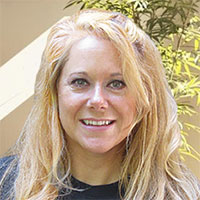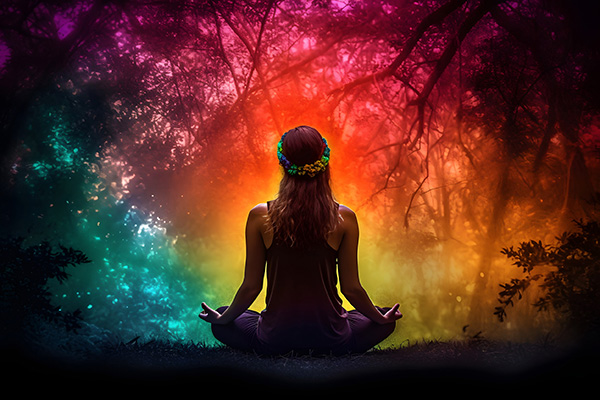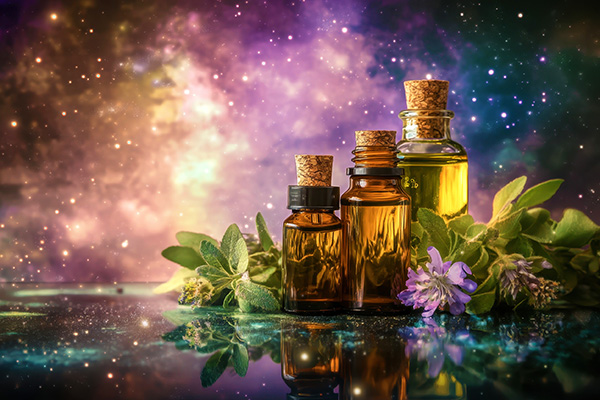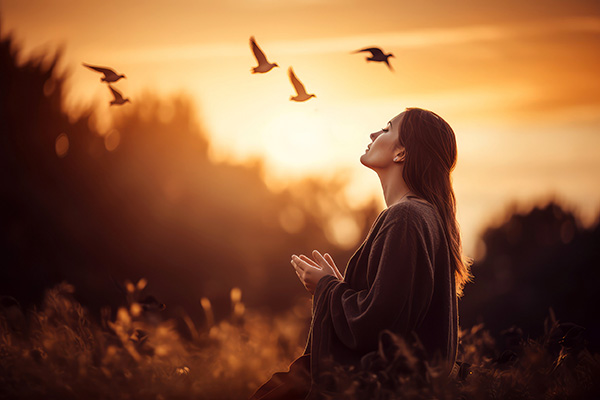How to Elevate Your Mood by Caring for Your Body
 When considering spiritual practices, we usually emphasize things like meditation, prayer, energy healing, or divination.
When considering spiritual practices, we usually emphasize things like meditation, prayer, energy healing, or divination.
These aspects are certainly important, but we often neglect a vital element of our spiritual development and well-being: looking after our physical body.
The body that sustains us is sacred. The well-known expression, “My body is my temple,” holds significant truth.
By treating our body with love, intention, and respect, it naturally fosters the growth of our spiritual awareness and soul development.
Our body serves as our means to engage with the world. It’s easy to prioritize the mind, yet the brain is an integral part of the physical body.
Neglecting our physical health can hinder our cognitive and intuitive abilities. The healthier and more vibrant our physical condition, the more clarity and depth we bring at every layer of our consciousness.
At some stage on our spiritual journey, we are called to care for our physical body earnestly. What this entails varies from individual to individual. Naturally, if you have any health issues, seeking assistance from a qualified healthcare professional is crucial.
However, there’s no need to completely change your life to begin. You can initiate your physical wellness journey with simple adjustments like drinking more water, engaging in daily movement, reducing screen time, enjoying nature, and selecting nourishing foods.
When you perceive that you are a spirit and this body is a temple, you will want to care for it well ~ Marianne Williamson
Getting started may feel daunting, but start with small steps. Select one manageable action. It might be taking a weekly walk in nature, setting a consistent bedtime, or replacing one processed snack with something healthier. Then commit to it.
Habits develop differently for everyone, but consistency is crucial regardless of how long it takes to establish your new habit. Persist, and it will eventually become second nature and enjoyable! Once it becomes habitual, add another small step forward.
In my experience, the more love and care I show my body, the more it rewards me in return. This nurturing has provided me clarity of thought, deeper meditative states, enhanced intuitive insights, improved dream recall, clearer judgment, and a more heart-centered approach to life. My psychic sensitivity and empathic connections have also intensified.
Our bodies possess their own awareness. Every cell is filled with intelligence. Honoring your physical being is a significant act of spiritual commitment. Yes, it demands dedication and discipline, and it can certainly feel tough at times. Yet, the benefits resonate throughout every aspect of your existence.
So take a moment to consider: What will your initial step be toward nurturing your sacred vessel?
Loving Ways To Care For Your Body
Create a sacred morning routine. Begin your day with activities that ground and energize you, such as stretching, journaling, drinking warm lemon water, or meditating. This establishes the foundation for a conscious, spiritually aligned day. A routine transforms into a ritual when performed with intention.
Soak up some sunlight. Spend a few minutes each day in natural light to balance your body’s rhythms and absorb its subtle energies. Sunlight acts like nature’s multivitamin! When enjoyed responsibly, it offers a plethora of health benefits that influence nearly every system in the body.
Emphasize quality sleep. Your body recuperates, your spirit integrates, and your energy body resets during sleep. Strive for a regular bedtime, and cultivate a calming routine to unwind. Safeguard this sacred time, as it is crucial to your spiritual and physical vitality.
Rest when necessary. Learn to heed your body’s signals to slow down or pause. Rest isn’t laziness; it’s an essential aspect of healing, integration, and growth. Regular rest restores balance and allows you to perceive the subtle voice of your intuition.
Consume whole, vibrant foods. Nourish your body with unprocessed, whole foods as close to their natural state as possible. These foods carry life force energy that supports your physical strength and spiritual clarity. Eating with mindfulness can be a sacred act of connection to the earth.
Practice intuitive eating. Tune into your body’s natural hunger and fullness signals, as well as your true cravings. Eat slowly and without distractions to observe how various foods affect your feelings. Honoring your body’s wisdom is a deeply respectful action.
Reduce toxins. Opt for clean and wholesome foods, products, and surroundings. Minimizing exposure to harsh chemicals eases the burden on your body’s systems and enhances your spiritual receptivity. Small changes over time can lead to significant improvements.
Stay hydrated. Water is vital for physical function, energy flow, and mental sharpness. Drinking clean, mineral-rich water throughout the day ensures your cells function efficiently and keeps your aura vibrant. Consider adding a splash of lemon or a pinch of sea salt for extra benefits.
Stay active. Incorporate daily movement where you focus entirely on your body. Choose a form of exercise that brings you joy, whether it’s stretching, dancing, walking, or swimming. The aim isn’t intensity, but rather aligning with how your body desires to express and release energy. Regular movement promotes emotional flow and elevates your vibration. Let movement serve as a form of meditation.
Breathe mindfully. Your breath acts as a bridge between your body and spirit. Engaging in slow, deep breathing throughout the day calms your nervous system and grounds you in the present moment. Begin your day with a few moments of intentional breathing to set your energy.
Enjoy salt baths. A warm bath with Epsom or sea salt can relieve muscle tension and remove energetic residue. Enhance the experience with essential oils, herbs, or crystals and set an intention. Use this time for a physical and spiritual cleansing.
Dress with joy. Wear attire that makes you feel comfortable, confident, and in alignment with your inner self. Natural fabrics, flowing styles, and specific colors can help you resonate more with your energy. Let your wardrobe be a reflection of who you are becoming.
Reconnect with nature. Being outside connects you to the healing rhythms of the natural world. Feel the earth beneath your feet, listen to the wind, and watch the changing sky. These experiences will ground your energy and realign your spiritual awareness. Nature is one of our most profound teachers and healers.
Unplug periodically. Take intentional breaks from screens and digital noise to reset your nervous system. Brief periods of digital detox can help you reconnect with your body, thoughts, and inner guidance. Use that time for rest, creativity, or simply being.
Express gratitude for your body. Talk to your body with kindness and appreciation. Thank your feet for carrying you, your hands for creating, and your heart for beating. This nurturing attention rewires how you relate to yourself and strengthens the mind-body-spirit connection.
Provide your body with loving touch. Place your hand on your heart, massage your own body, or simply wrap yourself in a hug. Touch is a language your body genuinely understands. This mindful presence fosters trust, healing, and connection.
Receive bodywork: Massage, Reiki, craniosacral therapy, and acupuncture can aid in releasing tension and moving stagnant energy. These healing practices support physical health and spiritual alignment. Make room to receive care and allow your body to be nurtured.
|
Sarah is a natural Clairvoyant, Clairaudient and Empath whose practice has been largely built on referrals. From a young age, her abilities emerged through prophetic dreams and messages she encountered. Her bond with Spirit became strikingly personal during the visit from her late mother, who conveyed a heartfelt message of love. Shortly after her passing, she discovered her mother’s Tarot deck, which propelled Sarah on her journey and calling to delve into her diverse gifts, including Eye-Gazing, a psychic tool she developed herself! Sarah continues to receive consistent messages and guidance directly from Spirit Guides and Angels, maintaining a thriving private practice in Canada since 1995. Actively involved in her spiritual community, she’s often invited to lead local events, including group meditations. She reveals that the practice of meditation has profoundly transformed her life. Sarah has created The Sacred Art of Creation, leading empowered women’s circles focused on self-healing, manifestation, and aligning with one’s higher self. If you’re interested in a reading with a compassionate reader who can relay direct messages from Spirit Guides and Angels, you can find Sarah at PsychicAccess.com. |
In today’s rapidly moving world, it’s simple to become engrossed in the daily grind and ignore our physical health. Nonetheless, nurturing our bodies is crucial for sustaining a healthy spirit and overall wellness. By caring for our bodies, we can elevate our spirits and feel more revitalized, focused, and optimistic.
One essential method for enhancing your spirit through body care is to make self-care a priority. This involves allocating time to rest, relax, and recharge. Ensure you get sufficient sleep each night, maintain a balanced diet, and engage in regular physical activity. These straightforward habits can significantly influence your mood and general perspective on life.
Beyond self-care, it’s vital to consider your mental and emotional well-being. Engage in mindfulness and meditation techniques to help soothe your mind and alleviate stress. Surround yourself with positive influences, and partake in activities that bring you joy and fulfillment. By caring for your mental and emotional state, you can uplift your spirit and find greater peace with yourself and the world around you.
Another key element of nurturing your body to enhance your spirit is connecting with nature. Spending time outdoors, whether it’s a leisurely walk in the park or an invigorating hike in the mountains, can markedly enhance your mood and overall well-being. Nature has a remarkable ability to ground us and foster a stronger connection to the world around us. Thus, make an effort to venture outside and relish the beauty of the natural environment whenever possible.
Finally, remember to treat yourself to some pampering now and then. Indulging in a massage, spa day, or a calming bath can help rejuvenate your spirit and foster a sense of deep well-being.
In closing, caring for your body is vital for uplifting your spirit and maintaining a positive outlook on life. By prioritizing self-care, attending to your mental and emotional health, connecting with nature, and indulging in some self-pampering, you can experience increased energy, focus, and positivity. Take the time to nurture your body and witness your spirit thrive. Continue reading














